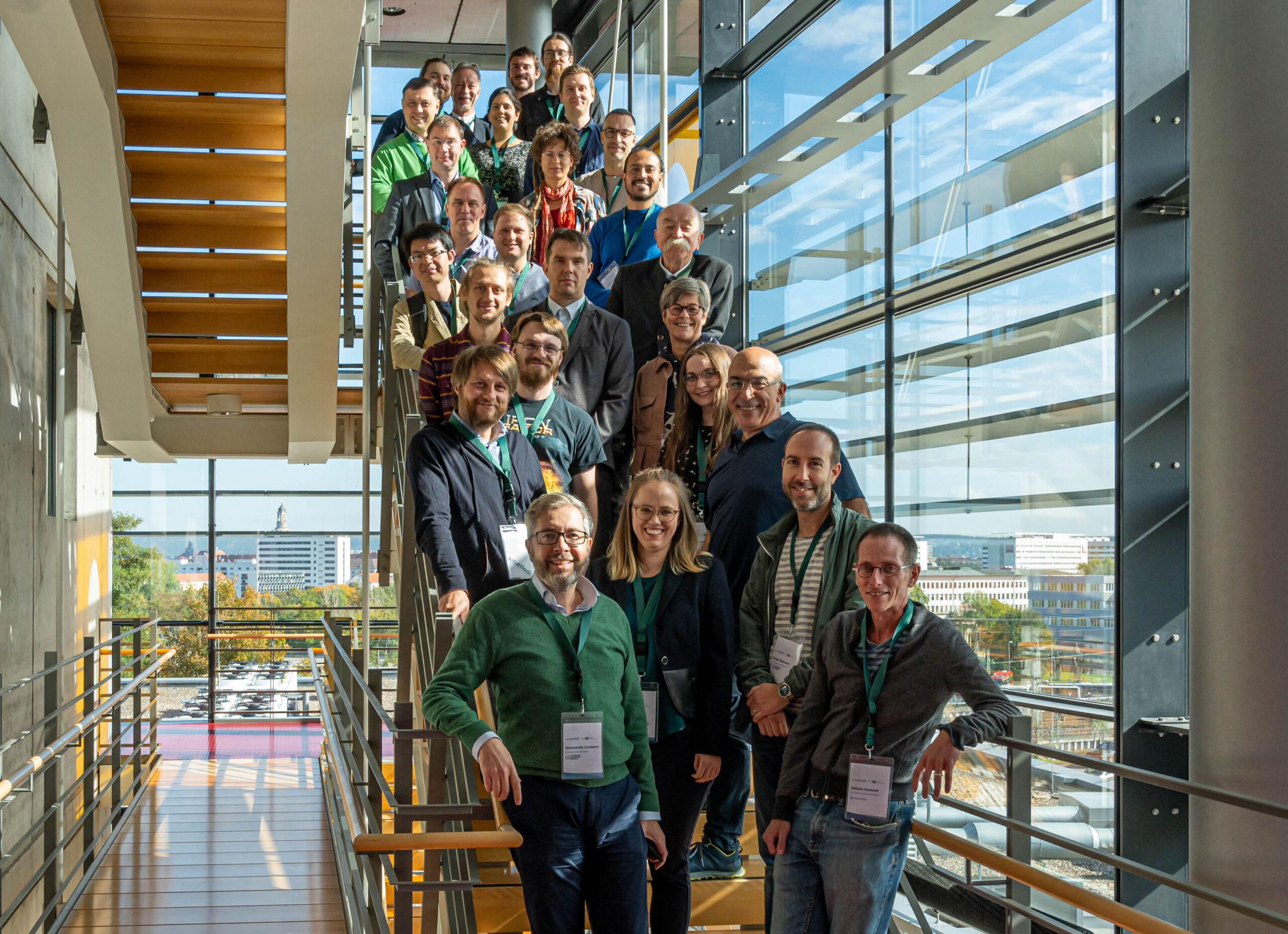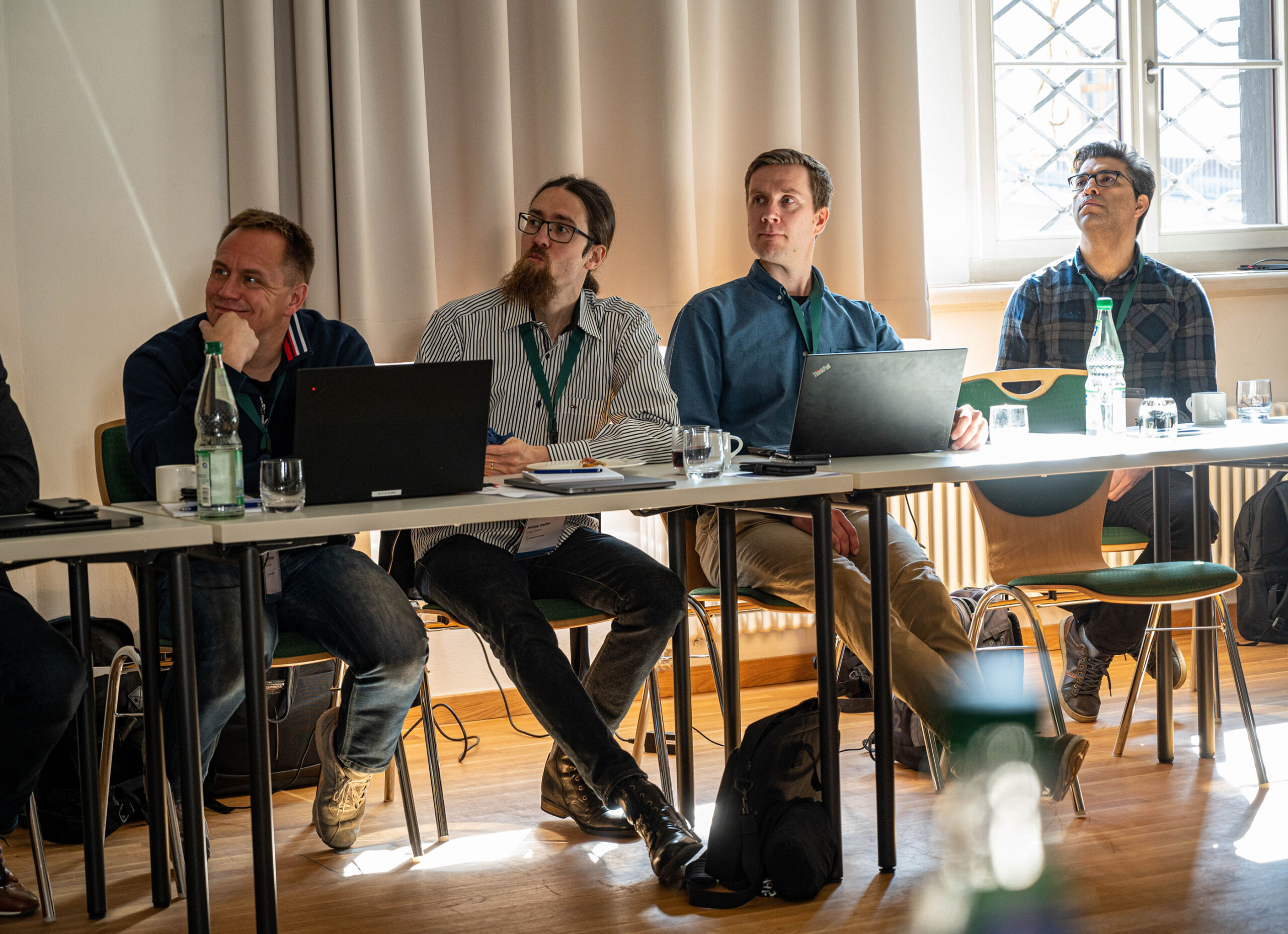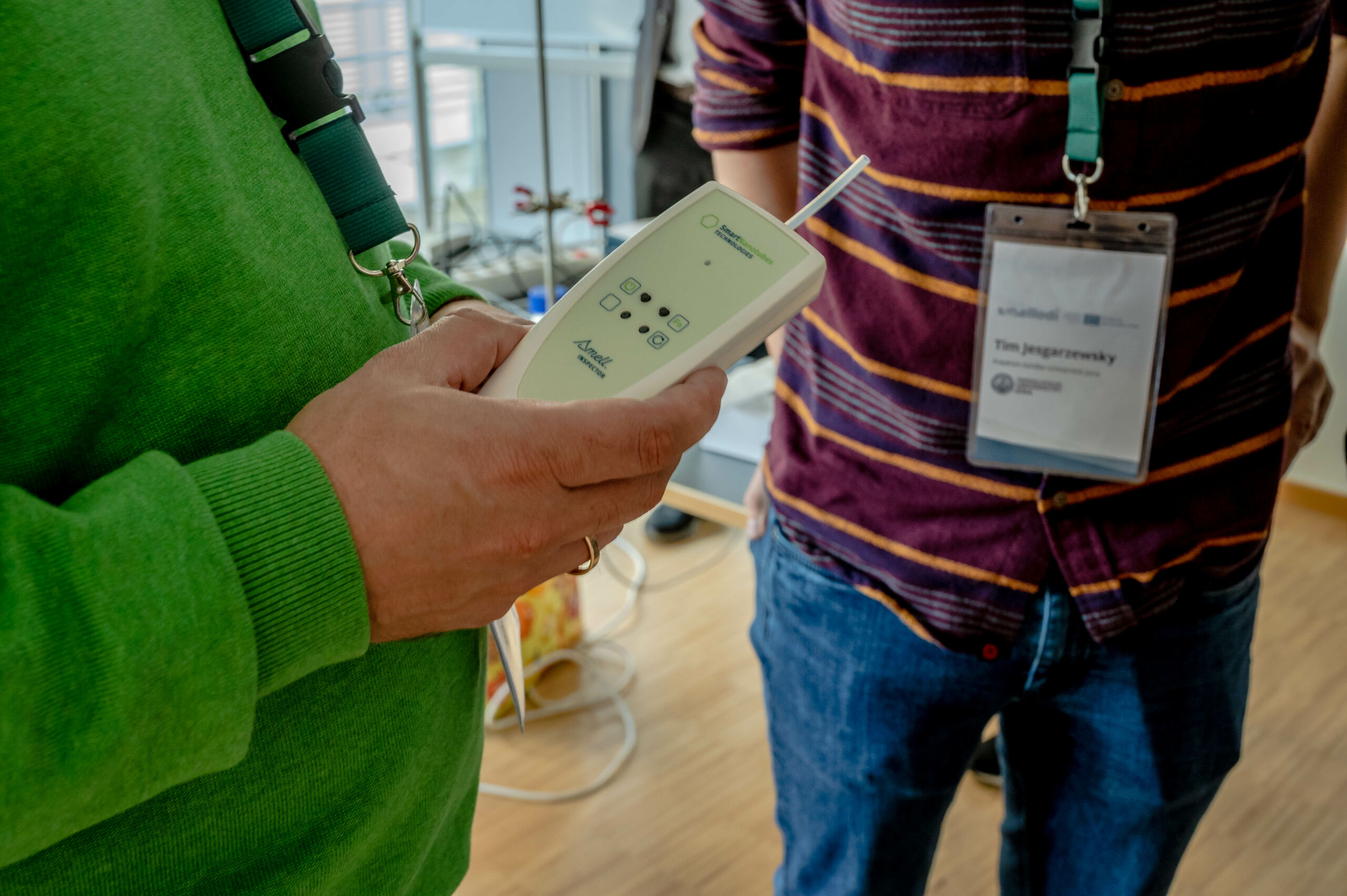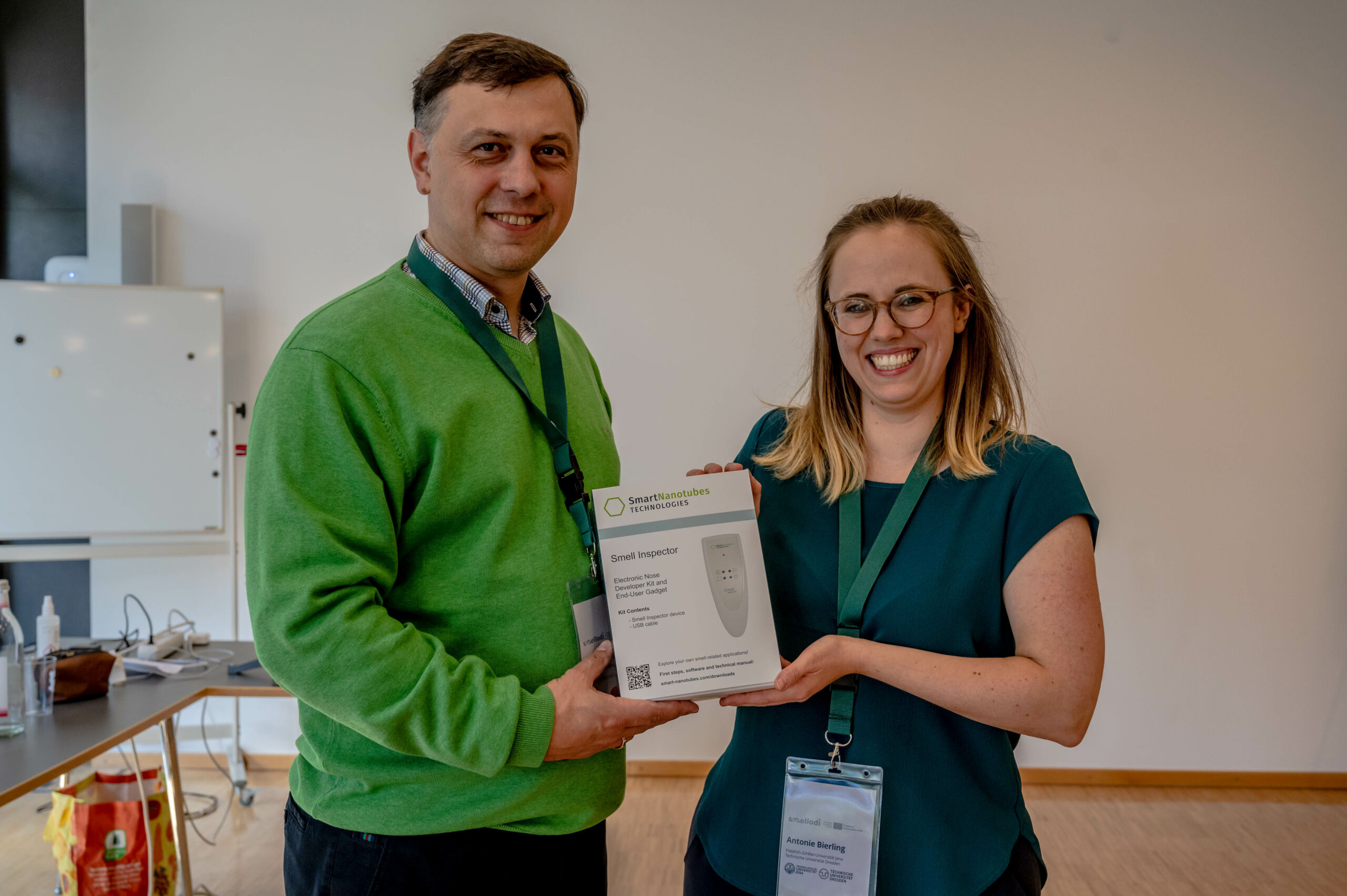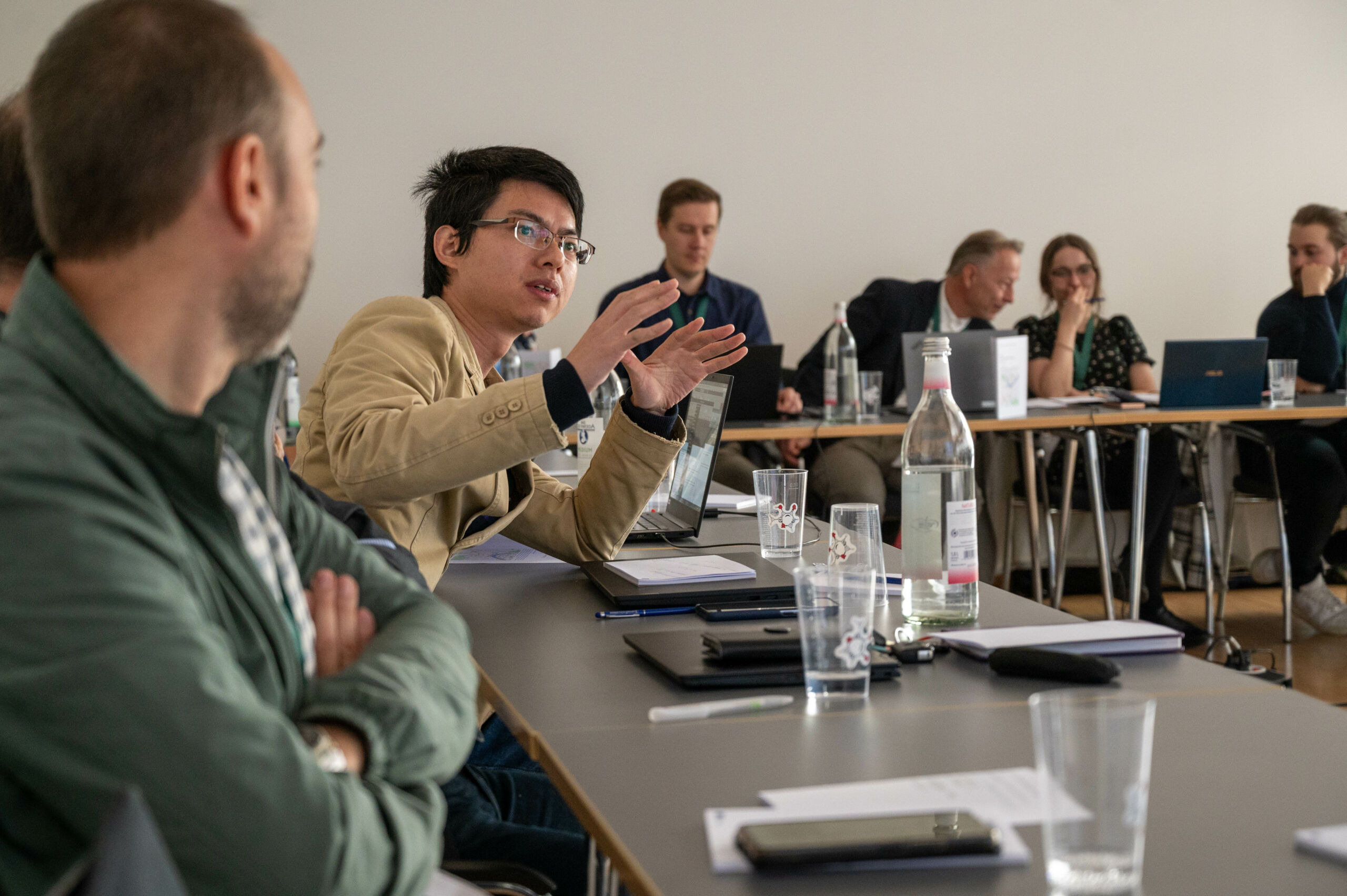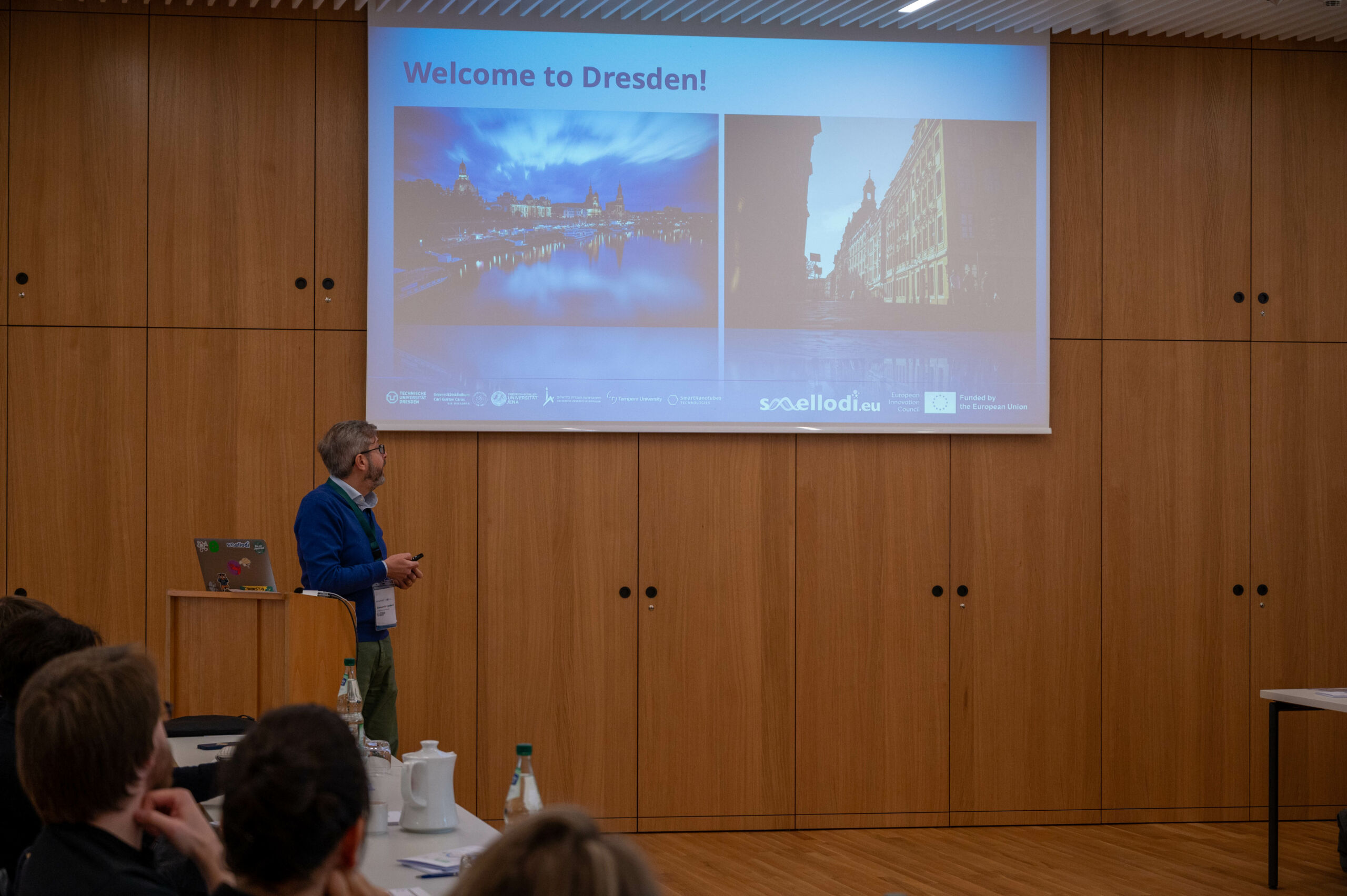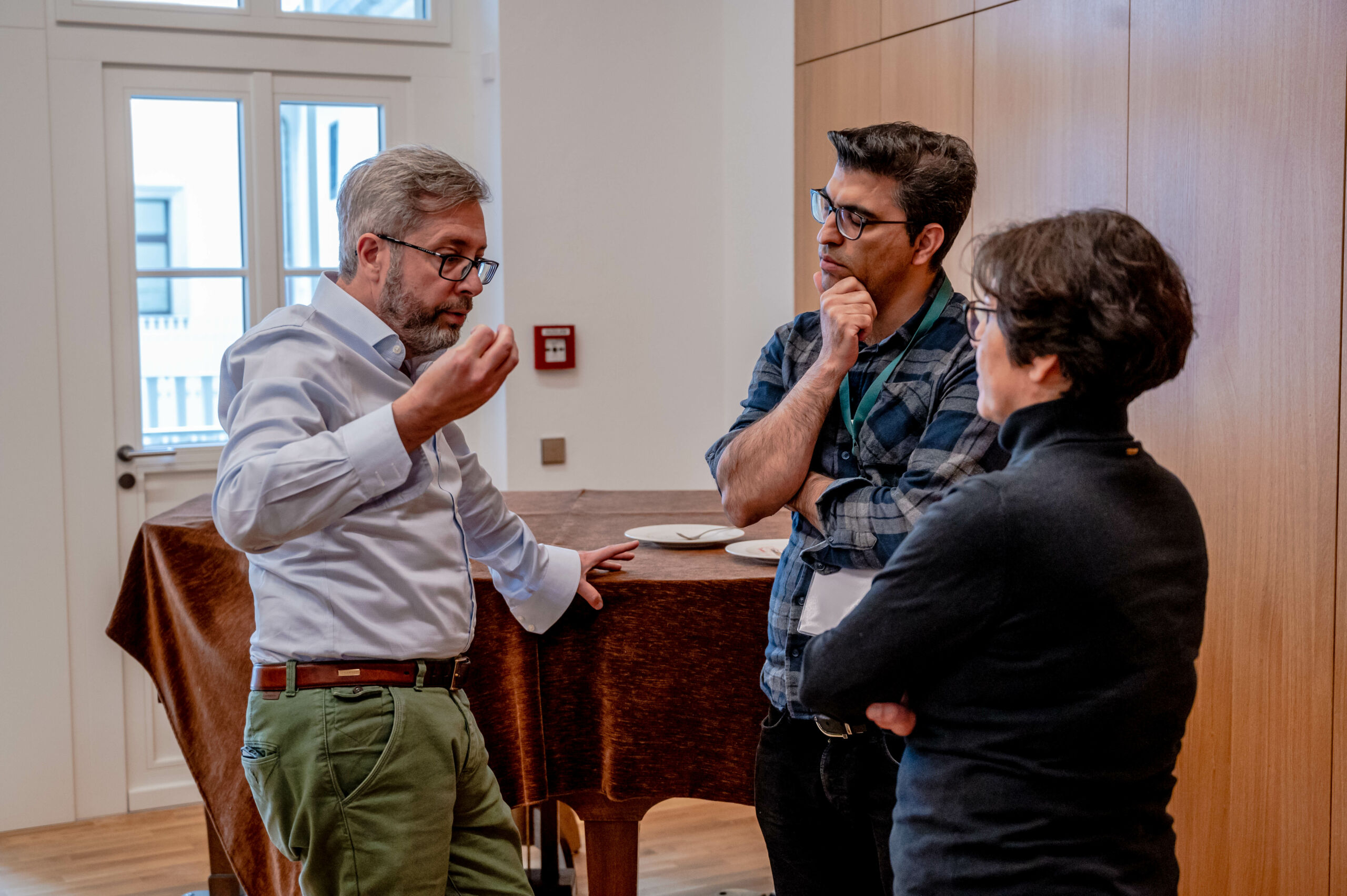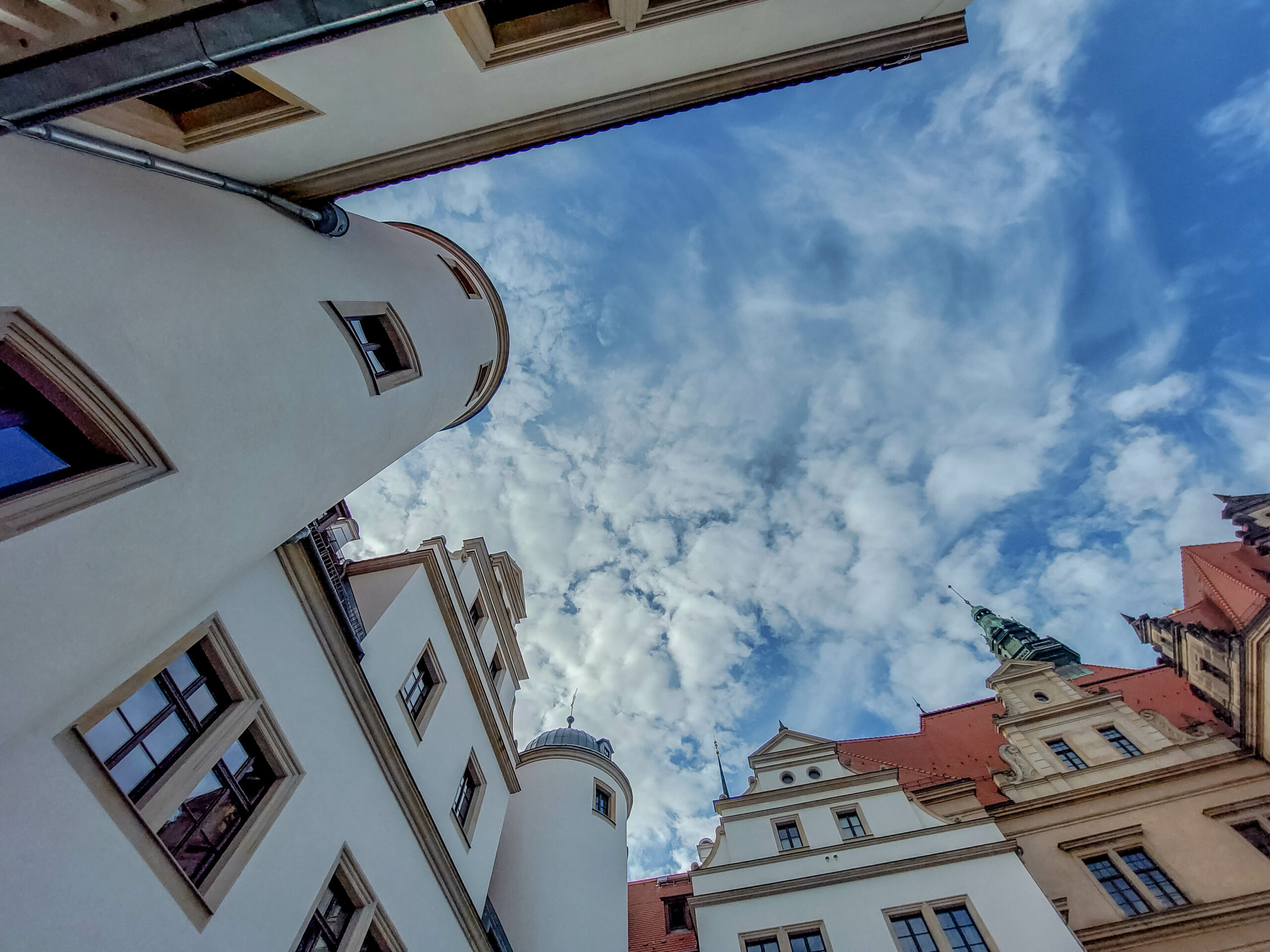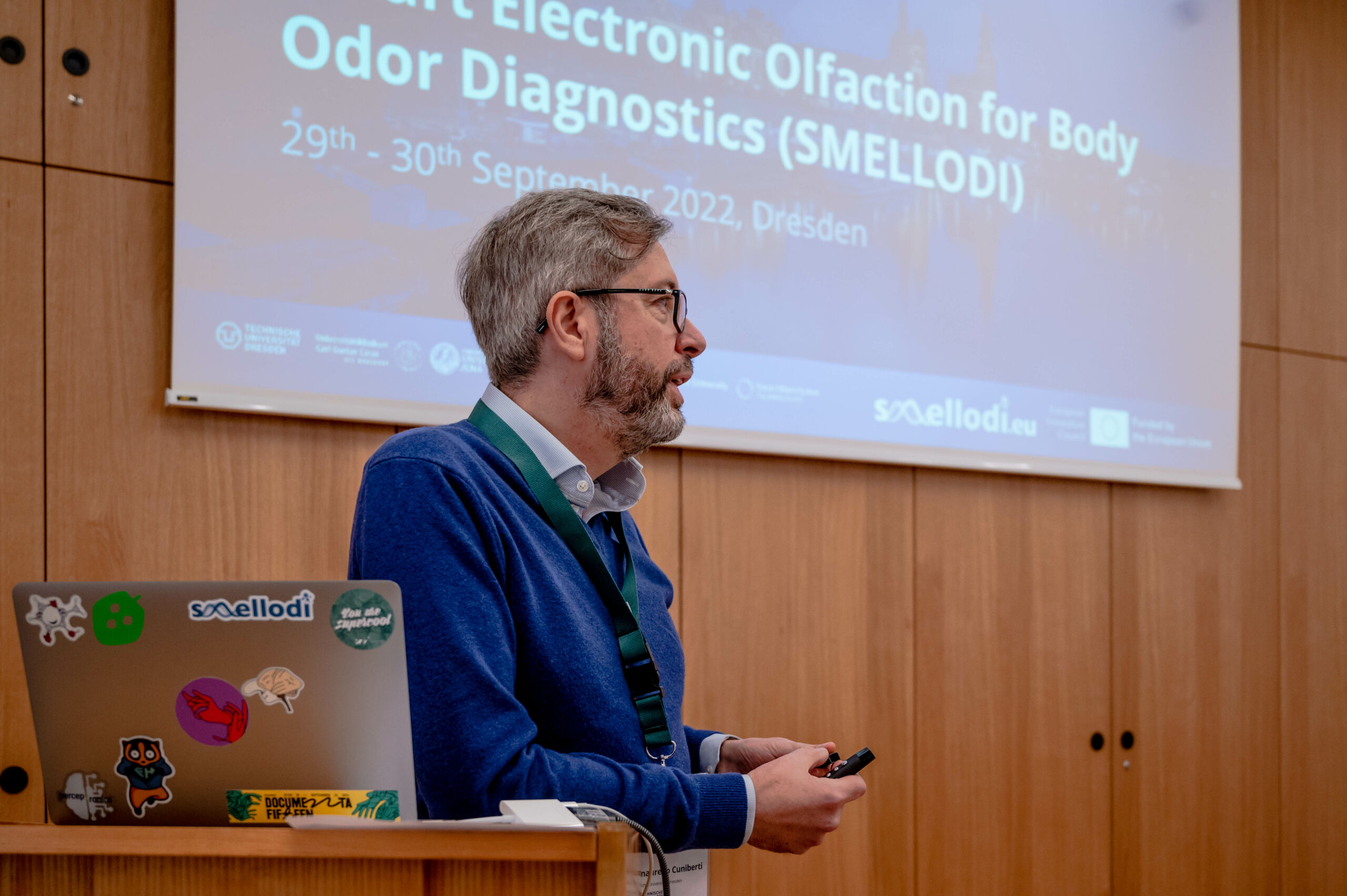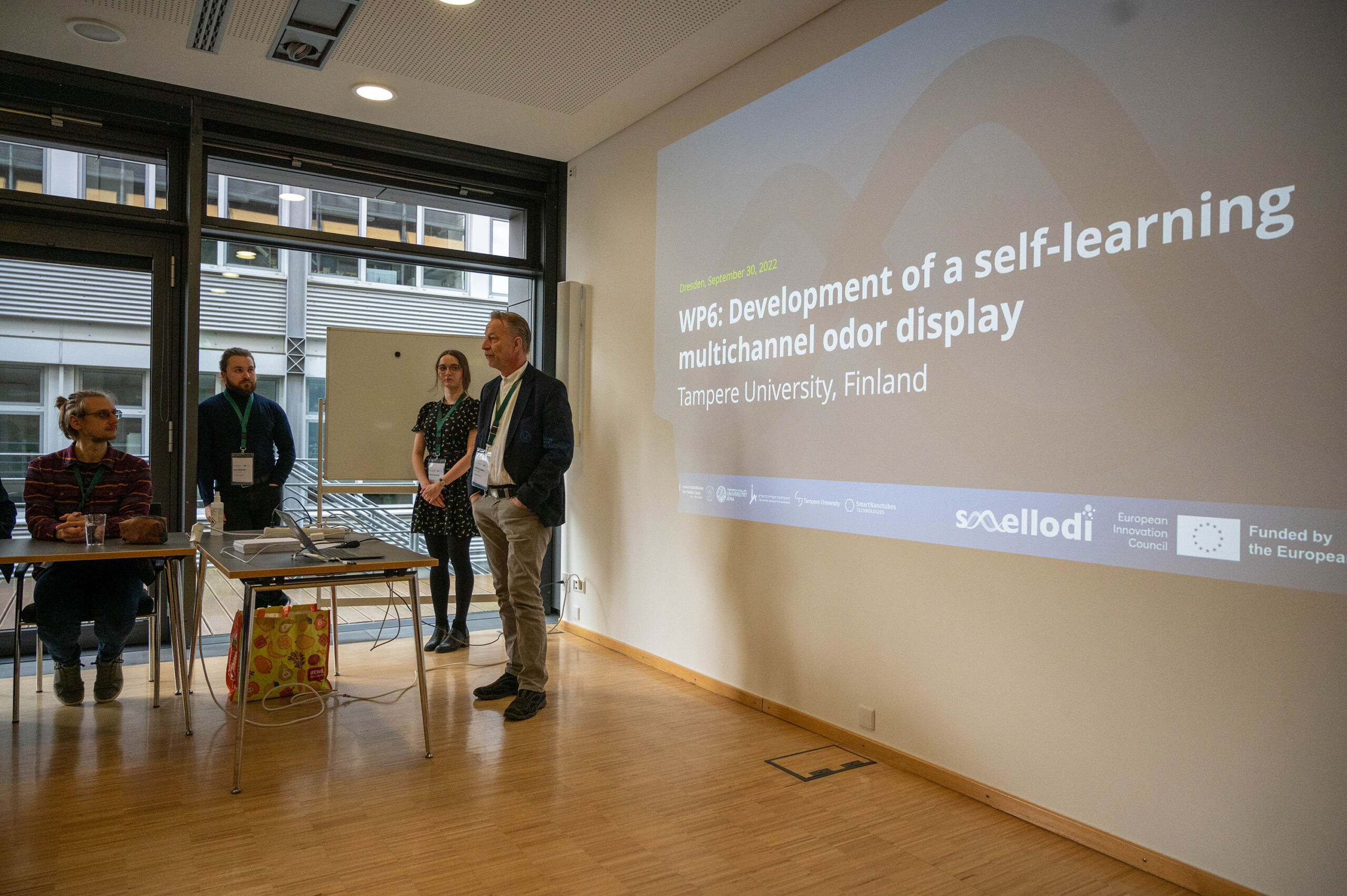M6 project meeting
At the invitation of the coordinating institute TU Dresden, the M6 project meeting was held from Thursday, 29th to Friday, 30th September 2022 in Dresden. The aim of the meeting was to enable each project partner to give an update of their work progress in the project, to provide interim results and to allow for discussing dependencies between the work packages. Furthermore, as this has been the first in person meeting of the whole consortium, a main objective was getting to know one another better and strengthening the links within the project.
Day 1
The first day was held at the “Haus der Kathedrale”, a historic building belonging to the building complex of Dresden “Residenzschloss”, the former royal palace. Starting the sessions, Prof. Cuniberti as coordinator of the project and representing Materials Science Dresden, gave a welcome introduction and informed the partners about Dresden and the meeting agenda and locations. After Prof. Cuniberti, organizational and administrative information were supplemented by Beate Brenner (TU Dresden Administration). After the administrative part, the partners introduced themselves, their team(s) and intermediate results.
In the morning, Antonie Bierling (Clinical Psychology Jena) presented the progress in WP2 “Development of a valid and reliable system of body odor description system” and Dr. Nicole Power (University Hospital Dresden) gave insights into the status of WP5 “Perception of health and disease in body odors”. In both work packages, the focus lies on a) the sampling of body odors from a variety of healthy body odors (WP2) and pathologically altered body odors from different syndroms (Parkinson’s disease, Mild Cognitive Impairment, COVID-19; WP5) and b) the perceptual rating of the obtained samples. In WP2, an online study has started to obtain perceptual labels for describing body odors; first intermediate results from ~60 participants were shown. Tampere University Finland and Hebrew University Israel agreed to adapt this online study in their groups to collect descriptors from the Finnish and Hebrew language. Furthermore, in WP2 the sampling procedure is about to begin and will continue until March 2023. In WP5, the recruitment of patients as body-odor donors has already started several months ago and is mostly finished for the patients and is in progress for age-matched controls. As a next step, further control participants will be recruited and the first measurements with the electronic nose device from SmartNanotubes Technologies GmbH Freital will start in WP2 and WP5 in the next weeks.
After lunch, the focus shifted towards modelling chemical behaviour and creating functionalizations tuned towards the recognition of body odors in electronic devices. Dr. Mattan Hurevich and Prof. Shlomo Yitzchaik (both Hebrew University Israel) presented the work in WP3 “Synthesizing Mucin Based Smell Receptor Molecules” and Dr. Rafael Gutierrez (Materials Science Dresden) and Dr. Alexander Croy (Physical Chemistry Jena) talked about WP4 “Computational Modelling and Statistical Learning”. In WP3 the main goal is the functionalization of carbon-based gas sensors (CNT and graphene based) using glycans. Those can also be found in biological systems and the group from Hebrew university has long-standing experience in using glycans for various sensing applications. The next step in WP3 will be grafting of the glycan receptors onto CNTs and graphene. To facilitate the selection of receptors and their binding to the carbon material, atomistic simulations will be conducted WP4. In particular, the structure of the self-assembled receptors and their interaction with the analytes will be studied in this work package. First results demonstrated the workflow and the scope of the simulations. Of particular interest for the participants was the presentation of a database of molecules associated with human body-odors (the human volatilome). This database is based on a recent literature survey of Drabińska et al. and was amended by Materials Science Dresden and Physical Chemistry Jena by molecular properties and structures.
The last point on the agenda was a discussion of general issues for the consortium as well as deliverables from WP1 “Coordination” and WP8 “Dissemination, Communication, Exploitation”. Dr. Alexander Croy and Antonie Bierling led the session.
Day 2
The second day was held at the premises of the laboratories of Materials Science Dresden at Max-Bergmann Centre for Biomaterials. The focus on the second day lay on the more applied aspects of the project – the update on the WP6 “Development of a self-learning multi-channel odor display” and WP7 “Data integration and software development” and practical demonstrations of the electronic nose device from SmartNanotubes Technologies GmbH Freital. At first, Prof. Surakka and his colleagues started to present the current progress of the development of the odor display device. Until now, a two-channel display is under development and in a piloting mode. Furthermore, Prof. Kallio explained the working principle of the iterative self-learning mechanism. It was discussed if and where perceptual input might help in the workflow. Further input was given on the used algorithms and the intended human testing of the odor display device. For WP7, Dr. Bezugly gave an introduction into the working principle of the SmartNanotubes Technologies GmbH Freital eNose device. This included introducing the core technology, as well as explaining how the acquired signals are further processed to discriminate different odors. Furthermore, Timo Land explained the suggested workflow for measurements during SMELLODI. A more detailed introduction into the eNose measurements has been given afterwards in a practical demonstration session. There, also the handing over of the eNose devices took place. This session was further supplemented by a lab tour in the laboratories at Max Bergmann Centre to give further insight into the work at Materials Science Dresden.
With a common lunch, the second day ended officially, the remaining afternoon was left for continuing discussions between the partners or individual departure.
The first in person SMELLODI meeting was perceived as a highly productive, inspiring, and enjoyable event by all partners. As envisioned, all partners gave updates on their work, which helped the other partners to clarify dependencies and common deadlines between the work packages.
Thanks to everyone who contributed to the success of the M6 project meeting!

